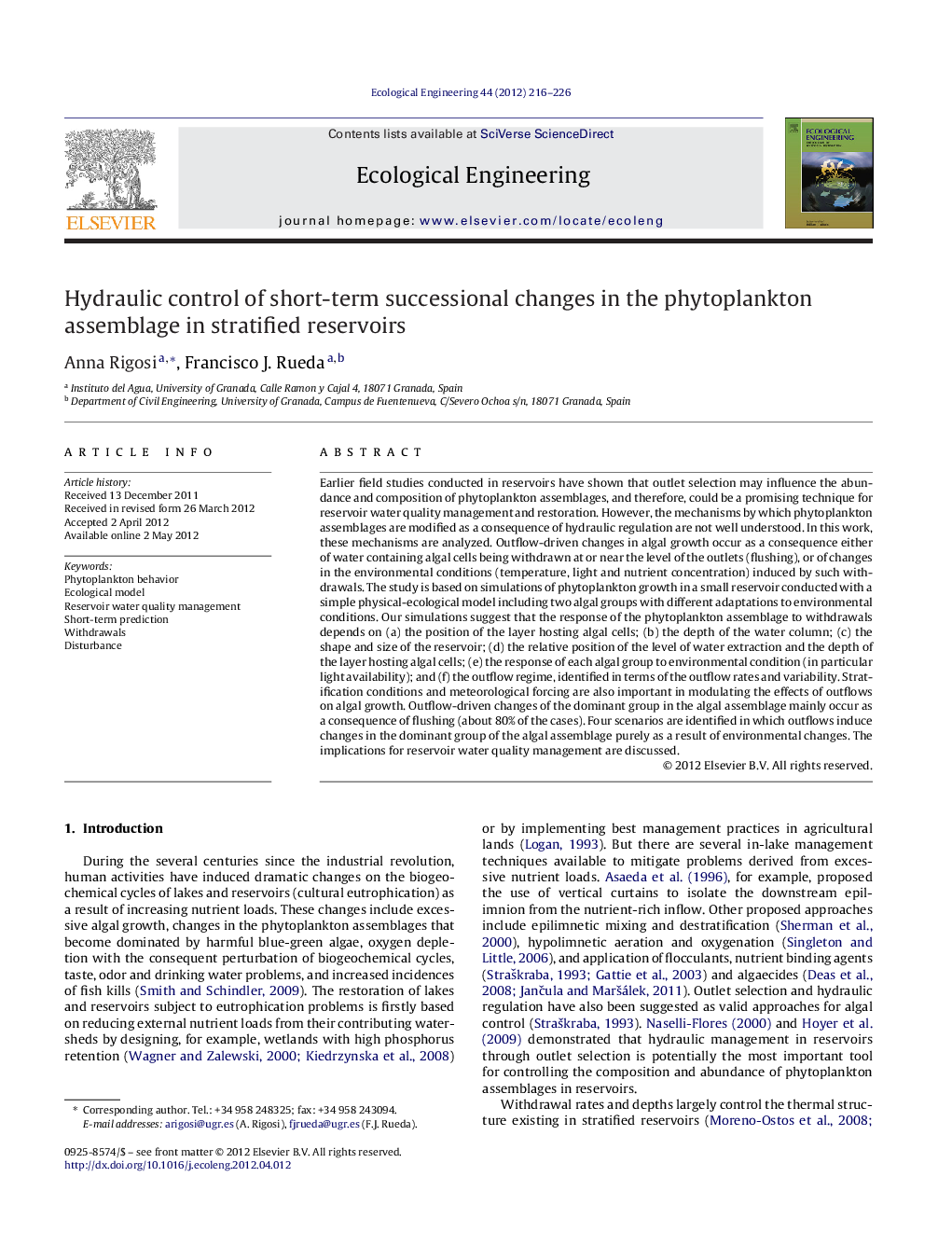| Article ID | Journal | Published Year | Pages | File Type |
|---|---|---|---|---|
| 6302703 | Ecological Engineering | 2012 | 11 Pages |
Abstract
Earlier field studies conducted in reservoirs have shown that outlet selection may influence the abundance and composition of phytoplankton assemblages, and therefore, could be a promising technique for reservoir water quality management and restoration. However, the mechanisms by which phytoplankton assemblages are modified as a consequence of hydraulic regulation are not well understood. In this work, these mechanisms are analyzed. Outflow-driven changes in algal growth occur as a consequence either of water containing algal cells being withdrawn at or near the level of the outlets (flushing), or of changes in the environmental conditions (temperature, light and nutrient concentration) induced by such withdrawals. The study is based on simulations of phytoplankton growth in a small reservoir conducted with a simple physical-ecological model including two algal groups with different adaptations to environmental conditions. Our simulations suggest that the response of the phytoplankton assemblage to withdrawals depends on (a) the position of the layer hosting algal cells; (b) the depth of the water column; (c) the shape and size of the reservoir; (d) the relative position of the level of water extraction and the depth of the layer hosting algal cells; (e) the response of each algal group to environmental condition (in particular light availability); and (f) the outflow regime, identified in terms of the outflow rates and variability. Stratification conditions and meteorological forcing are also important in modulating the effects of outflows on algal growth. Outflow-driven changes of the dominant group in the algal assemblage mainly occur as a consequence of flushing (about 80% of the cases). Four scenarios are identified in which outflows induce changes in the dominant group of the algal assemblage purely as a result of environmental changes. The implications for reservoir water quality management are discussed.
Related Topics
Life Sciences
Agricultural and Biological Sciences
Ecology, Evolution, Behavior and Systematics
Authors
Anna Rigosi, Francisco J. Rueda,
